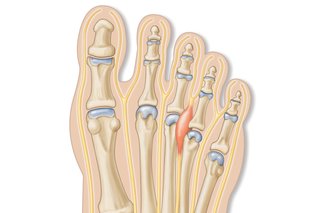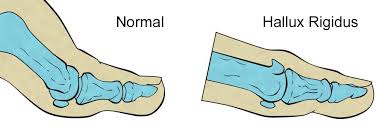
Morton’s neuroma is a painful condition that affects the ball of the foot, usually between the third and fourth toes. It is caused by an enlargement of the nerve that supplies sensation to the toes, which can be due to compression or irritation of the nerve. This can result in symptoms such as pain, burning, tingling, or numbness in the affected area. The exact cause of Morton’s neuroma is not fully understood, but it is thought to be related to the mechanics of the foot and repetitive trauma or pressure to the nerve.
Treatment for Morton’s neuroma may involve conservative measures such as changing footwear, using orthotics or padding to reduce pressure on the nerve, or taking anti-inflammatory medications. In more severe cases, injections of corticosteroids or other medications may be used to reduce pain and inflammation. Surgery may be recommended in rare cases where conservative treatment fails to provide relief.







